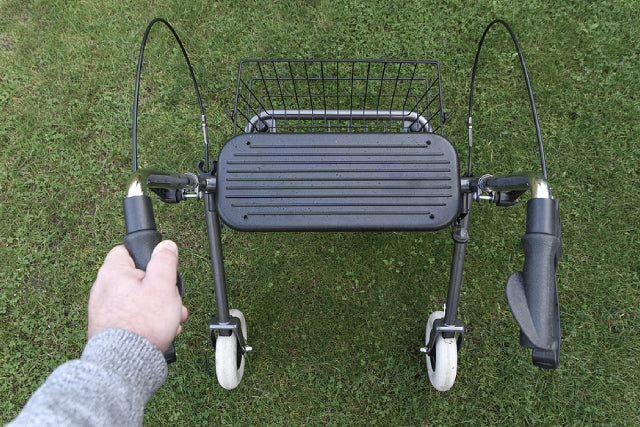
There are many types of personal mobility aids in the market, and depending on the condition you have, each of the PMAs has its specific benefits. Rollators are a popular mobility aid for individuals, especially those with limited mobility. They are available in two or four-wheeled ones and are designed to assist and support, offering additional balance.
Maintaining your rollator is vital to ensure optimal longevity and performance. Rollators, much like mobility scooters, are PMAs that are meant to enhance the quality of life for individuals with limited mobility. As such, ensuring that it is in tip-top condition by conducting regular checks and maintenance is crucial.
In this article, we will guide you through why it is important and how you can do so.
Why is maintaining your rollator vital?
Rollator maintenance is vital to keep it functioning safely and properly. Regular maintenance, such as inspecting the wheels and cleaning it as well as other primary features, help to extend its lifespan as well as give you peace of mind whenever you or your loved one uses it.
- Ensuring safety: The primary purpose of rollator maintenance is to ensure the user’s safety. A well-maintained rollator reduces the risk of accidents due to equipment failure, providing a reliable and stable aid for everyday use.
- Providing peace of mind: Knowing that the rollator is in an optimal condition offers peace of mind, allowing the user to rely on it effectively.
- Maintaining performance: A rollator in optimal condition performs better, making moving around more comfortable and easier.
- Preventing costly repairs: Regular checks can prevent minor issues from worsening into major ones, preventing the likelihood of costly replacements or repairs.
Rollator maintenance checklist and tips
To help you maintain your rollator in tip-top condition, here are some things to look out for:
- Inspect wheels regularly: Check the wheels for any wear and tear, ensuring they can rotate easily and are not damaged or blocked by any debris.
- Test brakes for effectiveness: Ensure that the brakes are functioning correctly. They should be able to stop the rollator from moving.
- Examine the frame: Check the frame for any possible damage, such as bending or cracks.
- Assess the backrest and seat: Ensure the backrest and seat’s padding are adequate and not thinning off.
- Clean your rollator: Regular cleaning helps prevent the build-up of grime and dirt, which can affect the rollator’s effectiveness and functionality.
- Tighten any loose bolts and screws: Check and tighten any loose bolts and screws to ensure the rollator is structurally sound.
- Lubricate the hinges and joints: Lubrication reduces friction-related wear and tear.
- Check for missing or loose parts: Checking for any missing or loose parts help you avoid compromising of the rollator’s functionality and safety.
Extending the lifespan of your rollator
In order to maximise and optimise the lifespan of your rollator, you need to conduct:
- Regular inspections: Conduct regular inspections to identify and address any issues before they worsen.
- Timely replacements of parts: Any damaged or worn-out parts must be promptly replaced to maintain their functionality and condition.
- Protect from the elements: Ensure that you store them away from extreme weather conditions, preventing corrosion and rust.
- Avoid overloading: Every rollator has a fixed bearing load. Do not exceed the limit specified for your rollator, as doing so can lead to unnecessary damage and stress.
Common rollator-related issues and how you can fix them
Some of the more common issues related to rollators are loose brakes, loose screws, damaged backrest and seat, corrosion or rust, worn-out, squeaky, and stiff wheels, as well as difficulty in unfolding and folding. You can easily tighten loose parts by using the appropriate screwdriver. For damaged backrests or seats, you can head back to your rollator provider to have them replaced. Lubrication works best for squeaky or stiff wheels. However, you might want to get it replaced if they are worn out.
Conclusion
All in all, regular cleaning and lubrication of your rollator and any moveable parts help to prevent wear and tear, making operating it easy and safe. Here at Falcon Mobility, our rollator is incredibly light and economical. Contact us to find out more about it!

